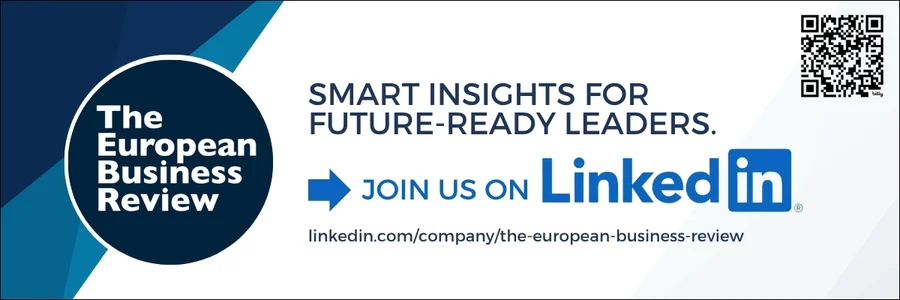By Lior Arussy
Arguably one of the most powerful examples of a performance-defining event for a company was done by a chain-smoking, alcohol-drinking CEO. His actions shaped performance for years at his company, and his employees loved it. In fact, he decorated the company’s locations with pictures from the event to remind them all about the story and its message to every employee.
This is the story of “Malice in Dallas,” and in typical corporate world style, it started with a legal dispute that led to a lawsuit.
It all started when Stevens Aviation sued Southwest Airlines for trademark infringement for using their slogan “Just Plane Smart.” Herb Kelleher, the Southwest Airlines CEO and protagonist of this story, was a lawyer by training and responded to the lawsuit in an unusual way. He invited the Stevens Aviation CEO to an arm-wrestling contest. Kelleher did not know that Stevens Aviation’s CEO Kurt Herwald was a bodybuilder. Herwald did not fully appreciate Kelleher’s leadership style. Both sides accepted.
Kelleher booked the Dallas Sportatorium, a major stadium, and invited employees and press to the event. He jokingly “trained” for the event by smoking and lifting bottles of bourbon while watching Mohammad Ali’s videos. In the spirit of pro wrestling, he showed up in full regalia and was welcomed by thousands of employees who cheered him on from their seats. To enhance the story, he competed while smoking a cigarette. He lost in two out of the three matches. But despite the loss, Stevens Aviation received so much free publicity from the event that they let it go, eventually settling with Southwest and allowing them to use the slogan.
Legal fights are long, expensive, and usually result in both sides feeling cheated. They never end well. For a company with a promise of great customer service, going forward with a lawsuit would have been the wrong move. Kelleher did something else to send a message to all his current employees and future employees as well: Southwest does it differently. They showed that they do not follow the beaten path. They sought quick and fun ways to resolve disputes, and to do things in a way that is easier, cheaper, and more fun for all involved.
Kelleher knew that the power of story is far greater than any corporate memo he could issue with the same message. This is why he kept pictures surrounding the story in every office. The story will live on and reinforce the company’s values, a far greater building block in the corporate culture.
The Power of Stories to Shape Reality
During a nationwide transformation project for a major car manufacturer, I gave each branch a quota of creating five shareable stories in sixty days. I wanted them to create the stories and then document them and share them with other branches, especially ones that embodied the company’s commitment to customers. The stories had to be real and authentic, exceed expectations, and surprise the customers.
We collected over five thousand stories in less than a year. During the process of documentation, we videotaped many of the participants and shared them publicly with all the branches. By documenting the stories, we created an inspiration and a support mechanism that enabled employees to tell their stories. It inspired employees to think big but also provided a safety net that made them feel secure in daring to create future stories.
The CEO’s response? “I didn’t know they could perform at that level.”
I was not surprised. Most employees want to do an amazing job and be proud of their work. But a company culture with a lack of inspiring stories usually has employees stick to formulated manuals that require them to perform to strict guidelines. The overall performance becomes blandly consistent, boring and undifferentiated for customers. Only with inspiration, permission, and encouragement will employees bring their personal touch and creativity to wow customers.
Stories are a source of inspiration and living proof that the company lives up to the values, purpose, and mission that it took upon itself. As we discussed in the previous chapter, purpose is not what is on the wall. It is what is in the soul. The soul of the organization is their decisions, behavior, and actions. By creating inspiring stories, we give permission to perform exceptionally.
As a leader, your role is to remove obstacles and help your team members rise to higher levels of performance. Sometimes that obstacle is not physical, but mental—employees do not believe they have permission to perform at those standards. Create stories that will inspire them to do so.
Herb Kelleher knew that he could not be in every customer interaction or guide employees to the best resolution to a dispute. But his stories can be there, whispering how to do things the Southwest way.
Stories at the Moment of Truth
It was the ultimate freak accident in consulting. One of our consultants conducted a focus group at a branch of a Fortune 500 services company. The employees participated to gather insight and assist the branch in improving its performance. But one of the participants, against the original agreement, decided to talk about another participant who spoke badly about the branch manager. Fuming, the branch manager fired the employee who spoke badly about him on the spot and held my consultant accountable for a “coup” in his branch. He also threatened to escalate the situation to the company’s CEO and demand that we be fired.
It was a moment of truth. We did not have much time to plan a story. The episode was evolving in front of our faces.
One of my colleagues (who was a veteran of one of the big four consulting firms) suggested we go the route of his previous employer. He suggested we fire the consultant and blame her for not following the rules, to isolate the situation and distance ourselves from it. I called the consultant to debrief. She actually had followed the rules, and not only that, the insights she had gathered about the branch manager were real. It was simply that the branch manager felt threatened by what was discovered and lashed out, a typical situation in our line of work. I decided we would stick by this consultant, as she had done nothing wrong, and try to fix things with our client. It would be no small feat, but I was determined to stick by our value: “Always do the human thing first.”
I personally reached out to the branch manager and had a heart-to-heart discussion with him. I was respectful of the manager’s experience and expertise, but firm about the call for action I requested. The fired employee was rehired and the project was brought back on track.
That consultant shared that story with others in the organization, and it became a legend. She was sure we would fire her and distance ourselves. It would have been the easy way out. But instead, we stuck by her. It inspired many of our consultants for years to come. Our people know that we have their back when they work on difficult transformation projects. We will not side with clients, especially if the clients are wrong. I still remember that moment and the decision we had to make. I was afraid that I would lose the project. I was not sure what would be the ultimate outcome. But the decision to stick with our consultant was in line with our company’s values, and everyone thereafter knew that this value was real. It became part of our storybook, and a guide for everyone else to follow.
Organizations are not a pile of manuals and legal warnings. They are a set of stories and chapters written every day. Author them, document them, and share them to create the culture and behavior you want. Culture is what happens when the leader leaves the room. The stories they share are the true story of your company, much more powerful than sweeping statements. They are also the true predictors of future employee behavior of your employees, while manuals and procedures are escape routes for employees not to deliver their best. Stories are the inspirational accelerators to help your employees reach an exceptional level of performance.
Excerpted from Dare to Author! Take Charge of the Narrative of your Life by Lior Arussy. Published by Greenleaf Brook Group Press. Copyright © 2024. All rights reserved.










